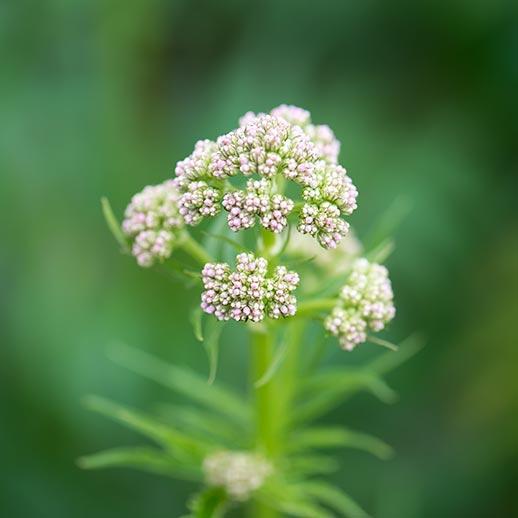
VALERIANA OFFICINALIS
Valerian
Sleep Support
Stress Support
WHAT IS IT?
This plant is native to Europe but was readily cultivated in North America in the early 19th century. Every eclectic medical text consulted listed this plant as
WHAT IS IT USED FOR?
There have been numerous human clinical trials conducted on Valerian and many have shown positive results to support a normal restful nights sleep. It is sold as
More products with Valerian
Active Consituents
The plant contains constituents called valepotriates, isovaltrates, and isovaleric acids known collectively as Valerenic Acids.
Parts Used
Root
Additional Resources
1.) Specific Medication and Specific Medicines. John M. Scudder, MD 1870. 2.) King’s American Dispensatory by Harvey Wickes Felter, MD and John Uri Lloyd, Phr.M. Ph.D. 1898. 3.) The American Materia Medica, Therapeutics and Pharmacognosy by Finley Ellingwood MD; 1922. 4.) Native American Ethnobotany, Moerman DE, Portalnd, OR 1998. Timber Press. 5.) Leathwood PD, Chauffard F, Heck E, Munoz-Box R. Aqueous extract of valerian root improves sleep qualities in man. Pharmacol. Biochem. Behav. 1982 Jul; 17(1) 65-71. 6.) Han, Z. Z., Yan, Z. H., Liu, Q. X., Hu, X. Q., Ye, J., Li, H. L., and Zhang, W. D. Acylated iridoids from the roots of Valeriana officinalis var. latifolia. Planta Med 2012;78(15):1645-1650. 7.) Fernandez S, Wasowski C, Paladini AC, Marder M. Sedative and sleep-enhancing properties of linarin, a flavonoid-isolated from Valeriana officinalis. Pharmacol Biochem Behav 2004;77:399-404.
Important Precautions
Not for use during pregnancy or lactation. If you have a medical condition or take pharmaceutical drugs please consult your doctor prior to use. There is a small percentage of people who respond paradoxically with valerian and it causes stimulation rather than sedation.
Disclaimer
This information in our Herbal Reference Guide is intended only as a general reference for further exploration, and is not a replacement for professional health advice. This content does not provide dosage information, format recommendations, toxicity levels, or possible interactions with prescription drugs. Accordingly, this information should be used only under the direct supervision of a qualified health practitioner such as a naturopathic physician.
Why Gaia Herbs?
Plant-Powered
Harnessing traditional wisdom, delivering Nature's vitality
Potent
Full spectrum formulas for an herb's full array of beneficial compounds
Purity Tested
All products are screened for pesticides, microbes & heavy metals
Transparent
Know what's in your supplement— Meet Your Herbs to learn more